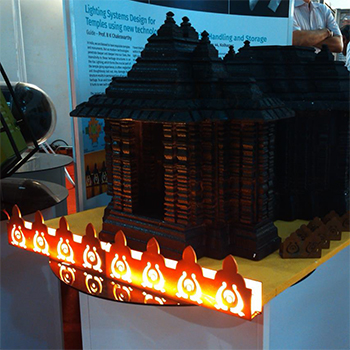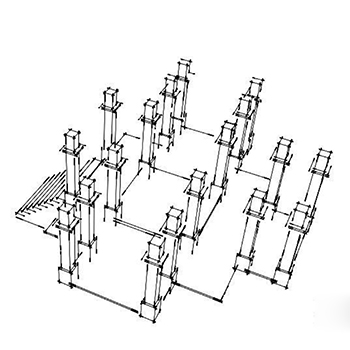History fascinates all of us. It speaks to us in various forms, through ruins, scrolls, stories and memories. In India, we are blessed to have temples and other monuments which weave the seamless tapestry of our existence since times immemorial. But as the footsteps of time approach louder, and modern technologies penetrate deeper and deeper into our lives, the insensitivity to these heritage structures is on the rise. Lighting which forms the crucial part of the temple-going experience is often neglected and thoughtlessly laid out. This is seen in terms of the entire system. Any damage to the structure results in permanent loss of our cultural heritage. The project was conceived and executed keeping this ?pain? in mind. Within the scope of the project, it has been tried to address all issues related to lighting within the context of heritage temples. The issues that fall within this gamut include light sources, fixtures, wire management, switches and power supplies to some extent. Accordingly, we worked within the context of Ambernath temple. The temple is a classical structure built circa 900 A.D., and is in need of urgent attention. Referring to books and in consultation with scholars, the temple was separated into zones and the lighting need for each zone was identified. The possible places where lights could be mounted were also identified. These included blank lintels and pillars. The crowd movement patterns through the temple were observed. The present power supply, switches and light sources were also listed. Various luminaires and design directions were explored. Since the brief was to remain unobtrusive within the temple space, the luminaire was a simple channel designed to house the LED lights with temple motifs engraved on it. The module ensures protection, repeatability and variations in motifs across locations.The lights were then fabricated under collaboration with VinLED. Various luminaires and design directions were explored. Since the brief was to remain unobtrusive within the temple space, the luminaire was a simple channel designed to house the LED lights with temple motifs engraved on it. The module ensures protection, repeatability and variations in motifs across locations.The lights were then fabricated under collaboration with VinLED and were installed in the temple for pilot purposes after obtaining necessary permissions from the Archaeological Survey of India.The design was further scaled down and copper cut-pieces were fabricated in Kumbharwada, Mumbai.Throughout the project, enough attention has been paid to keep the proposed systems culturally sensitive and unobtrusive within the sacred space that is the Indian Temple.





